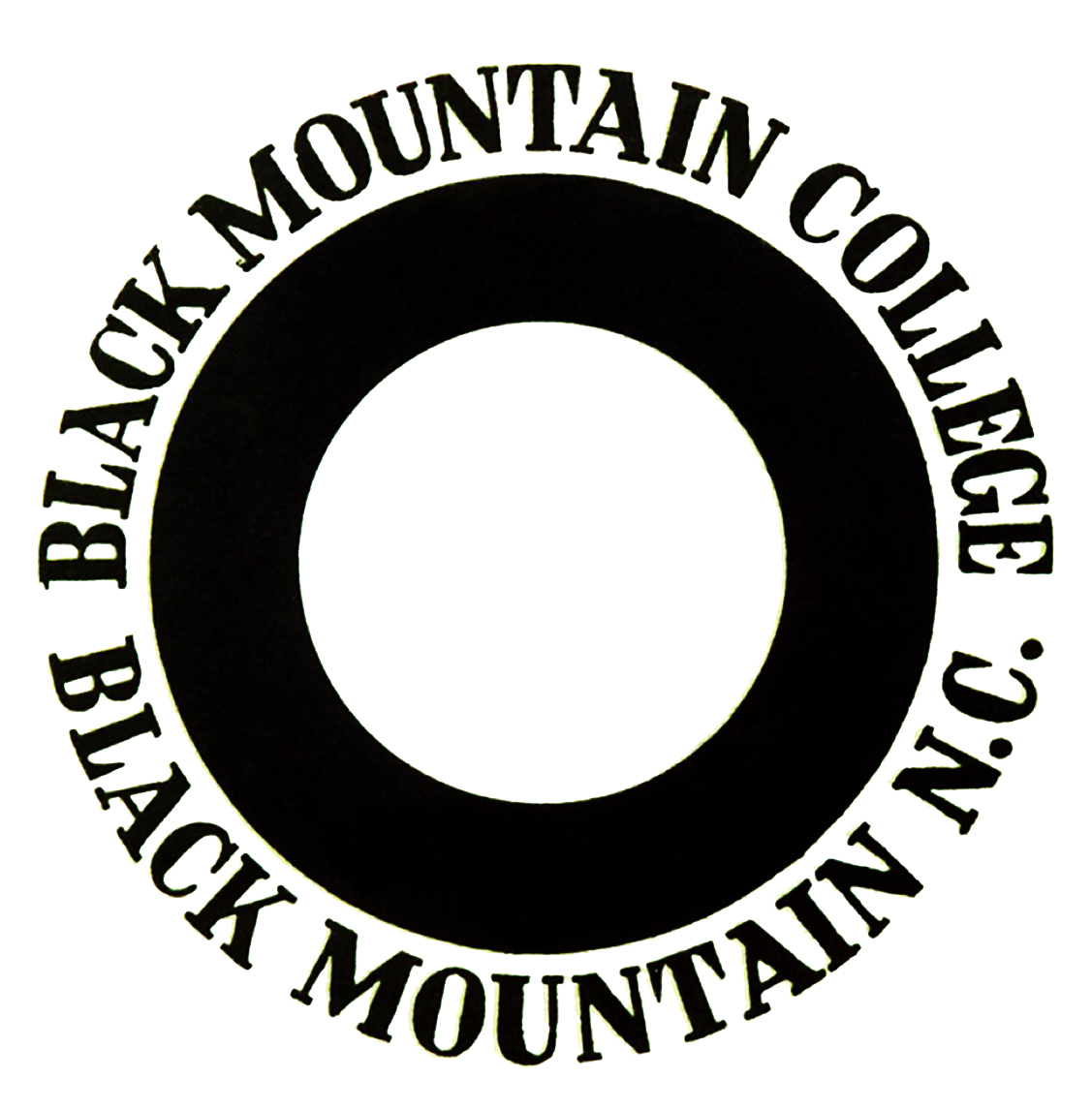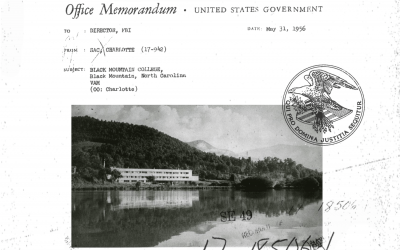Black Mountain College: A Brief Introduction
 The story of Black Mountain College begins in 1933 and comprises a fascinating chapter in the history of education and the arts. Conceived by John A. Rice, a brilliant and mercurial scholar who left Rollins College in a storm of controversy, Black Mountain College was born out of a desire to create a new type of college based on John Dewey’s principles of progressive education. The events that precipitated the college’s founding occurred simultaneously with the rise of Adolf Hitler, the closing of the Bauhaus school in Germany, and escalating persecution of artists and intellectuals in Europe. Some of these refugees found their way to Black Mountain, either as students or faculty. Meanwhile, the United States was mired in the Great Depression.
The story of Black Mountain College begins in 1933 and comprises a fascinating chapter in the history of education and the arts. Conceived by John A. Rice, a brilliant and mercurial scholar who left Rollins College in a storm of controversy, Black Mountain College was born out of a desire to create a new type of college based on John Dewey’s principles of progressive education. The events that precipitated the college’s founding occurred simultaneously with the rise of Adolf Hitler, the closing of the Bauhaus school in Germany, and escalating persecution of artists and intellectuals in Europe. Some of these refugees found their way to Black Mountain, either as students or faculty. Meanwhile, the United States was mired in the Great Depression.
The founders of the college believed that the study and practice of art were indispensable aspects of a student’s general liberal arts education, and they hired Josef Albers to be the first art teacher. Speaking not a word of English, he and his wife Anni left the turmoil in Hitler’s Germany and crossed the Atlantic Ocean by boat to teach art at this small, rebellious college in the mountains of North Carolina.
 Black Mountain College was fundamentally different from other colleges and universities of the time. It was owned and operated by the faculty and was committed to democratic governance and to the idea that the arts are central to the experience of learning. All members of the college community participated in its operation, including farm work, construction projects, and kitchen duty. Twenty minutes east of Asheville, the secluded environment fostered a strong sense of individuality and creative intensity.
Black Mountain College was fundamentally different from other colleges and universities of the time. It was owned and operated by the faculty and was committed to democratic governance and to the idea that the arts are central to the experience of learning. All members of the college community participated in its operation, including farm work, construction projects, and kitchen duty. Twenty minutes east of Asheville, the secluded environment fostered a strong sense of individuality and creative intensity.
Legendary even in its own time, Black Mountain College attracted and created maverick spirits, some of whom went on to become well-known and extremely influential individuals in the latter half of the 20th century. A partial list includes Willem and Elaine de Kooning, Robert Rauschenberg, Josef and Anni Albers, Jacob Lawrence, Merce Cunningham, John Cage, Cy Twombly, Kenneth Noland, Susan Weil, Vera B. Williams, Ben Shahn, Ruth Asawa, Franz Kline, Arthur Penn, Buckminster Fuller, M.C. Richards, Francine du Plessix Gray, Charles Olson, Robert Creeley, Dorothea Rockburne and many others who have made an impact on the world in a significant way. Even now, decades after its closing in 1957, the powerful influence of Black Mountain College continues to reverberate. For more information view our resources.




The story of Black Mountain College begins in 1933 and comprises a fascinating chapter in the history of education and the arts. Conceived by John A. Rice, a brilliant and mercurial scholar who left Rollins College in a storm of controversy, Black Mountain College was born out of a desire to create a new type of college based on John Dewey’s principles of progressive education. The events that precipitated the college’s founding occurred simultaneously with the rise of Adolf Hitler, the closing of the Bauhaus school in Germany, and escalating persecution of artists and intellectuals in Europe. Some of these refugees found their way to Black Mountain, either as students or faculty. Meanwhile, the United States was mired in the Great Depression.
The founders of the college believed that the study and practice of art were indispensable aspects of a student’s general liberal arts education, and they hired Josef Albers to be the first art teacher. Speaking not a word of English, he and his wife Anni left the turmoil in Hitler’s Germany and crossed the Atlantic Ocean by boat to teach art at this small, rebellious college in the mountains of North Carolina.

Black Mountain College was fundamentally different from other colleges and universities of the time. It was owned and operated by the faculty and was committed to democratic governance and to the idea that the arts are central to the experience of learning. All members of the college community participated in its operation, including farm work, construction projects, and kitchen duty. Twenty minutes east of Asheville, the secluded environment fostered a strong sense of individuality and creative intensity.
Legendary even in its own time, Black Mountain College attracted and created maverick spirits, some of whom went on to become well-known and extremely influential individuals in the latter half of the 20th century. A partial list includes Willem and Elaine de Kooning, Robert Rauschenberg, Josef and Anni Albers, Jacob Lawrence, Merce Cunningham, John Cage, Cy Twombly, Kenneth Noland, Susan Weil, Vera B. Williams, Ben Shahn, Ruth Asawa, Franz Kline, Arthur Penn, Buckminster Fuller, M.C. Richards, Francine du Plessix Gray, Charles Olson, Robert Creeley, Dorothea Rockburne and many others who have made an impact on the world in a significant way. Even now, decades after its closing in 1957, the powerful influence of Black Mountain College continues to reverberate. For more information view our resources.



Read More:
Myths and Legends of Black Mountain College
We’re clearing up the rumors. In this case, fact is often more fascinating than fiction.
Jean Charlot Fresco Conservation
Read more about BMCM+AC’s project to conserve one of Black Mountain College’s most iconic artworks.
FBI Investigations at BMC
At the height of mid-20th Century communist paranoia, the FBI conducted a secret investigation into BMC.



